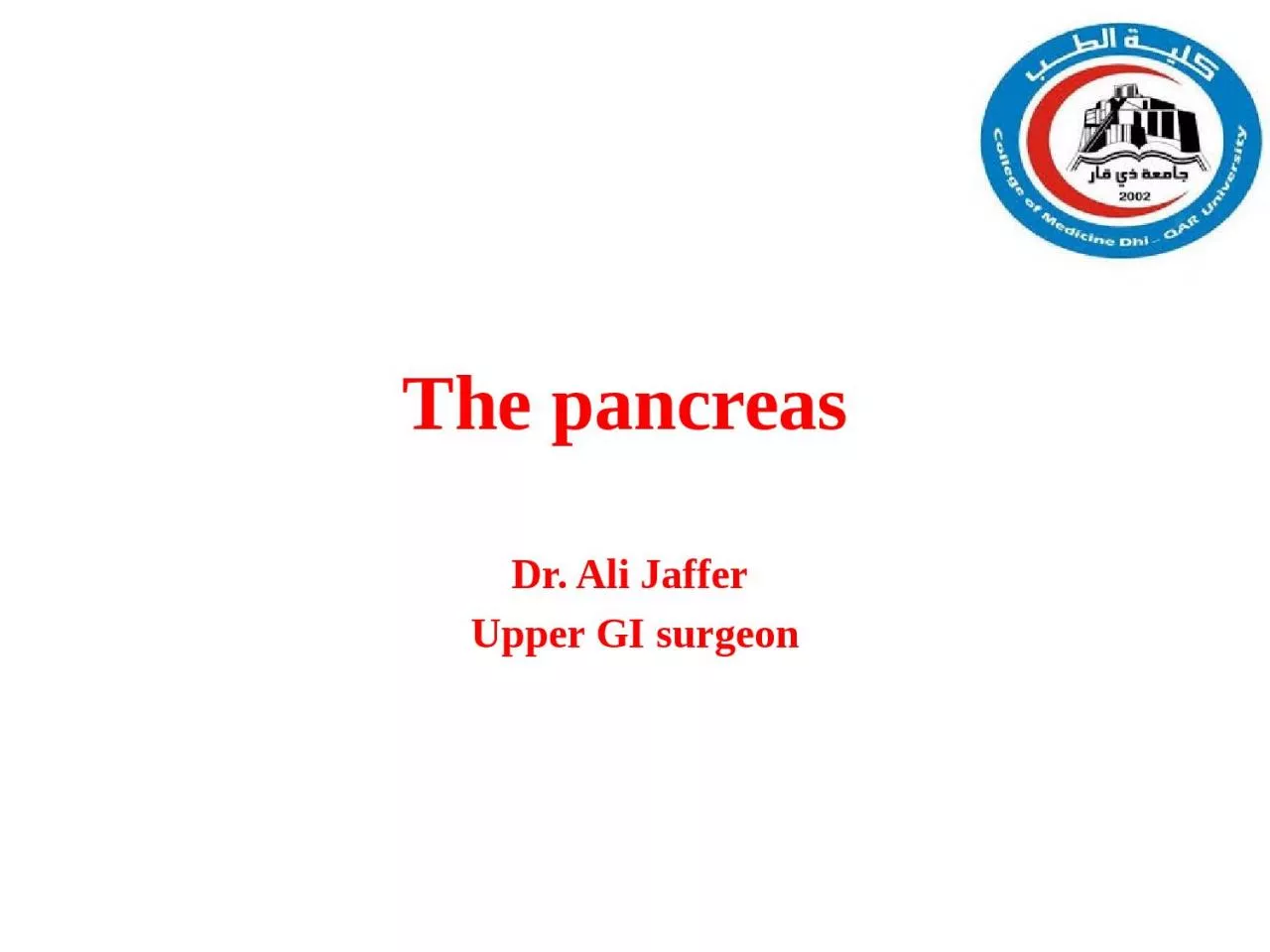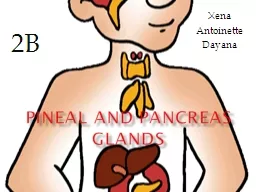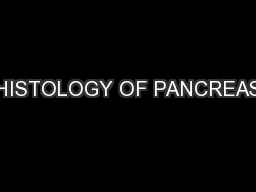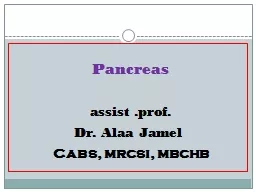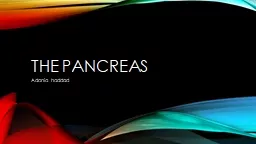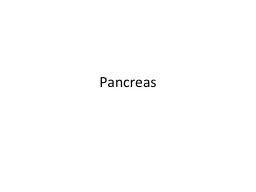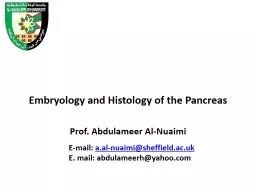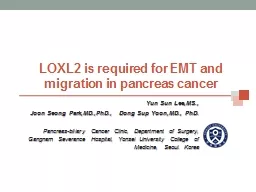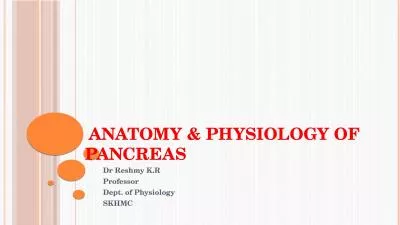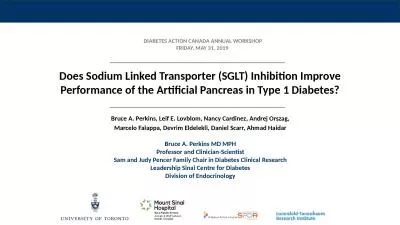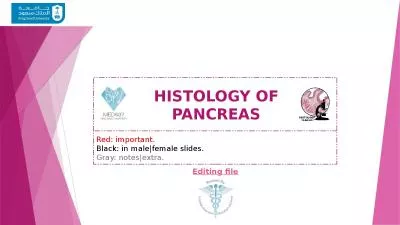PPT-The pancreas Dr. Ali Jaffer
Author : elizabeth | Published Date : 2022-06-08
Upper GI surgeon Anatomy The pancreas is situated in the retroperitoneum It is divided into a head which occupies 30 of the gland by mass and a body and tail
Presentation Embed Code
Download Presentation
Download Presentation The PPT/PDF document "The pancreas Dr. Ali Jaffer" is the property of its rightful owner. Permission is granted to download and print the materials on this website for personal, non-commercial use only, and to display it on your personal computer provided you do not modify the materials and that you retain all copyright notices contained in the materials. By downloading content from our website, you accept the terms of this agreement.
The pancreas Dr. Ali Jaffer: Transcript
Download Rules Of Document
"The pancreas Dr. Ali Jaffer"The content belongs to its owner. You may download and print it for personal use, without modification, and keep all copyright notices. By downloading, you agree to these terms.
Related Documents

